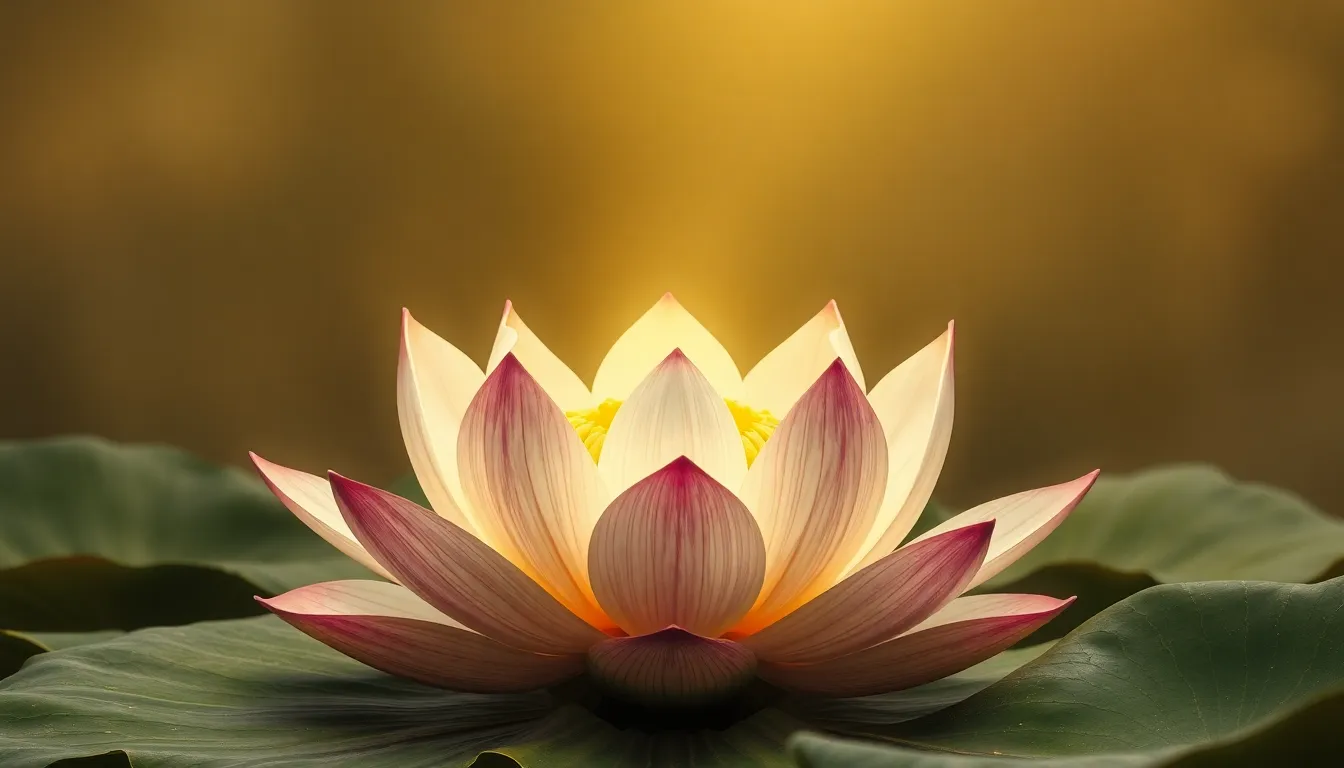The Spiritual Importance of the Egyptian Lotus
1. Introduction to the Egyptian Lotus
The lotus flower, particularly the blue lotus (Nymphaea caerulea), holds profound significance in ancient Egyptian culture. This beautiful aquatic plant, with its striking blue petals and golden center, was revered not only for its aesthetic appeal but also for its deep spiritual symbolism. The lotus flourishes in the still waters of the Nile River, a vital source of life in ancient Egypt, and its growth cycle reflects the natural rhythms of the land and the cosmos.
2. Symbolism of the Lotus in Egyptian Culture
The lotus flower is often viewed as a powerful symbol of creation and rebirth. In Egyptian mythology, it is believed that the world emerged from a primordial lotus flower that bloomed on the waters of chaos, representing the birth of the sun and life itself. The cyclical nature of the lotus, which opens during the day and closes at night, mirrors the daily journey of the sun across the sky and the seasonal flooding of the Nile River, which brought fertility to the land.
- Creation: The lotus is linked to the creation of the universe, symbolizing the first moments of existence.
- Rebirth: Its life cycle signifies regeneration, connecting to the ideas of life, death, and renewal.
- Connection to the Nile: The lotus thrives in the Nile, embodying the river’s life-giving properties.
3. The Lotus in Egyptian Mythology
In the vast tapestry of Egyptian mythology, the lotus flower plays a significant role in various myths and legends. It is often associated with the gods and goddesses of creation and rebirth. Two prominent deities linked to the lotus are:
- Nefertum: The god of perfumes and healing, often depicted as a young man emerging from a lotus flower, symbolizing beauty and the blossoming of life.
- Ra: The sun god, who is sometimes depicted as rising from a lotus at the beginning of each day, signifying the dawn and the start of a new cycle.
These associations highlight the lotus as a significant element in the narrative of life, death, and the divine in ancient Egyptian belief systems.
4. The Lotus and the Afterlife
The lotus flower also holds great significance in funerary practices and tomb art in ancient Egypt. It is often depicted in burial contexts, symbolizing resurrection and the eternal cycle of life. The lotus was believed to aid in the journey of the deceased, providing them with the means to transcend death and achieve immortality.
- Funerary Art: Lotus motifs are commonly found in tomb paintings and sculptures, representing the hope for rebirth in the afterlife.
- Resurrection Symbol: The flower’s ability to rise from the mud and bloom anew is emblematic of the soul’s journey after death.
Thus, the lotus became a powerful symbol for the ancient Egyptians, embodying their beliefs about the afterlife and the continuity of existence.
5. Spiritual Practices Involving the Lotus
Rituals and ceremonies in ancient Egypt often incorporated the lotus flower, reflecting its spiritual significance. The lotus was used in various religious practices, including:
- Offerings: Lotus flowers were commonly offered to gods and placed in temples as a sign of respect and devotion.
- Ritual Cleansing: The lotus was associated with purity; its essence was believed to cleanse the spirit and facilitate spiritual enlightenment.
In these practices, the lotus represented not just physical beauty but also the pursuit of higher spiritual goals, such as enlightenment and purity of heart.
6. Artistic Representations of the Lotus
The lotus flower is a prominent motif in ancient Egyptian art and architecture. It appears in various forms, symbolizing beauty, divinity, and the connection to the Nile. In temples and monuments, the lotus is often depicted in:
- Columns: Lotus columns were commonly used in temple architecture, symbolizing the connection between earth and heaven.
- Frescoes: Lotus flowers frequently adorned frescoes, illustrating their importance in both everyday life and religious contexts.
The iconography of the lotus served not only as decoration but also as a powerful reminder of the divine and the sacredness of life.
7. Modern Interpretations and Influence
Even today, the lotus continues to hold significance in various contemporary spiritual practices. It is celebrated as a symbol of peace, beauty, and spiritual awakening. The flower is often used in:
- Yoga and Meditation: The lotus is a common symbol in yoga practices, representing the journey towards enlightenment.
- Art and Literature: Modern artists and writers draw inspiration from the lotus, using it to convey themes of resilience and beauty emerging from adversity.
This enduring legacy reflects the timeless nature of the lotus as a symbol of hope and spiritual growth.
8. Conclusion
Throughout history, the Egyptian lotus has held profound spiritual importance, symbolizing creation, rebirth, and the eternal cycle of life. Its associations with gods, the afterlife, and spiritual practices underscore its central role in ancient Egyptian culture. As we explore the legacy of the lotus today, it continues to inspire modern spiritual practices and artistic expressions, serving as a reminder of beauty, purity, and the quest for enlightenment.




